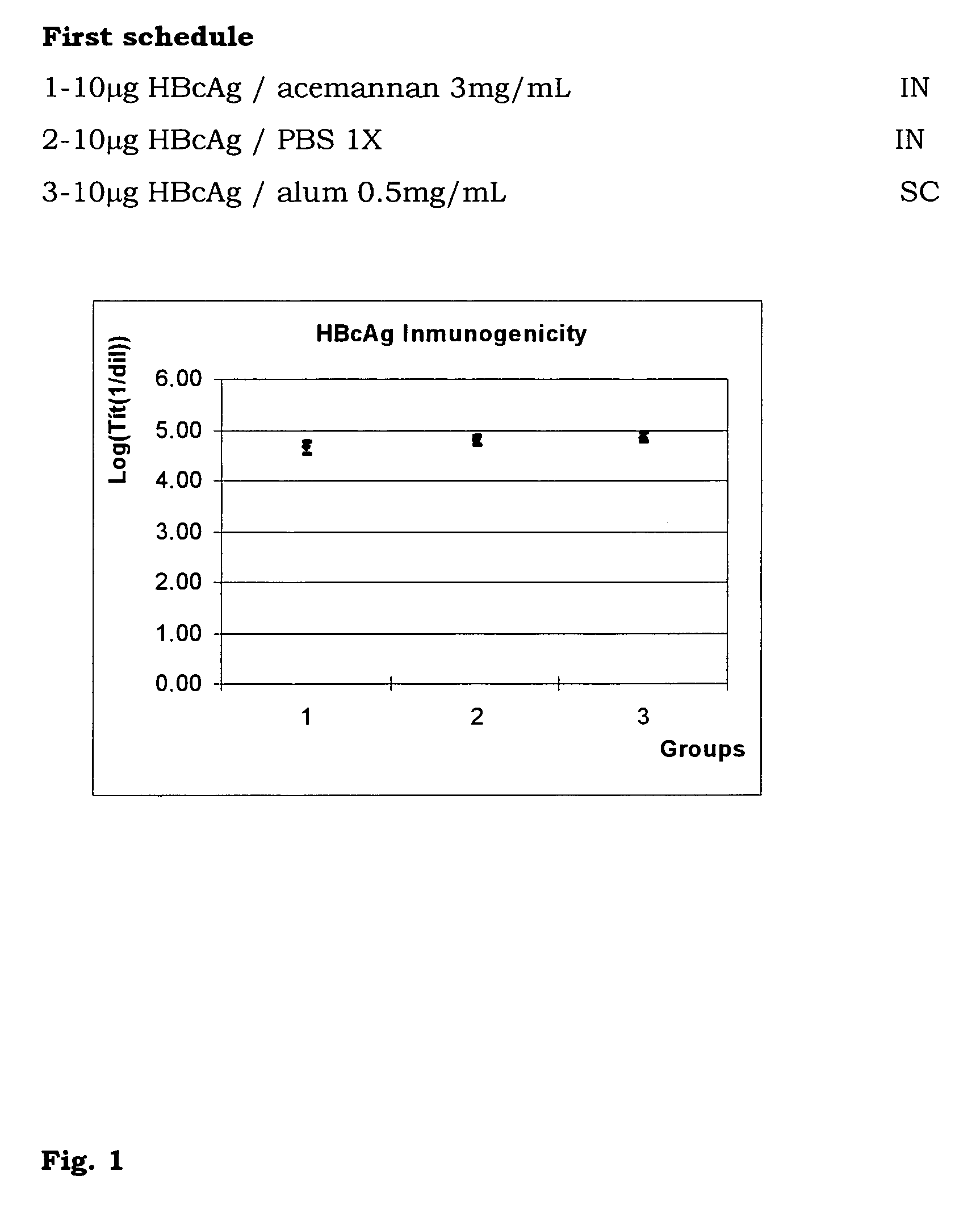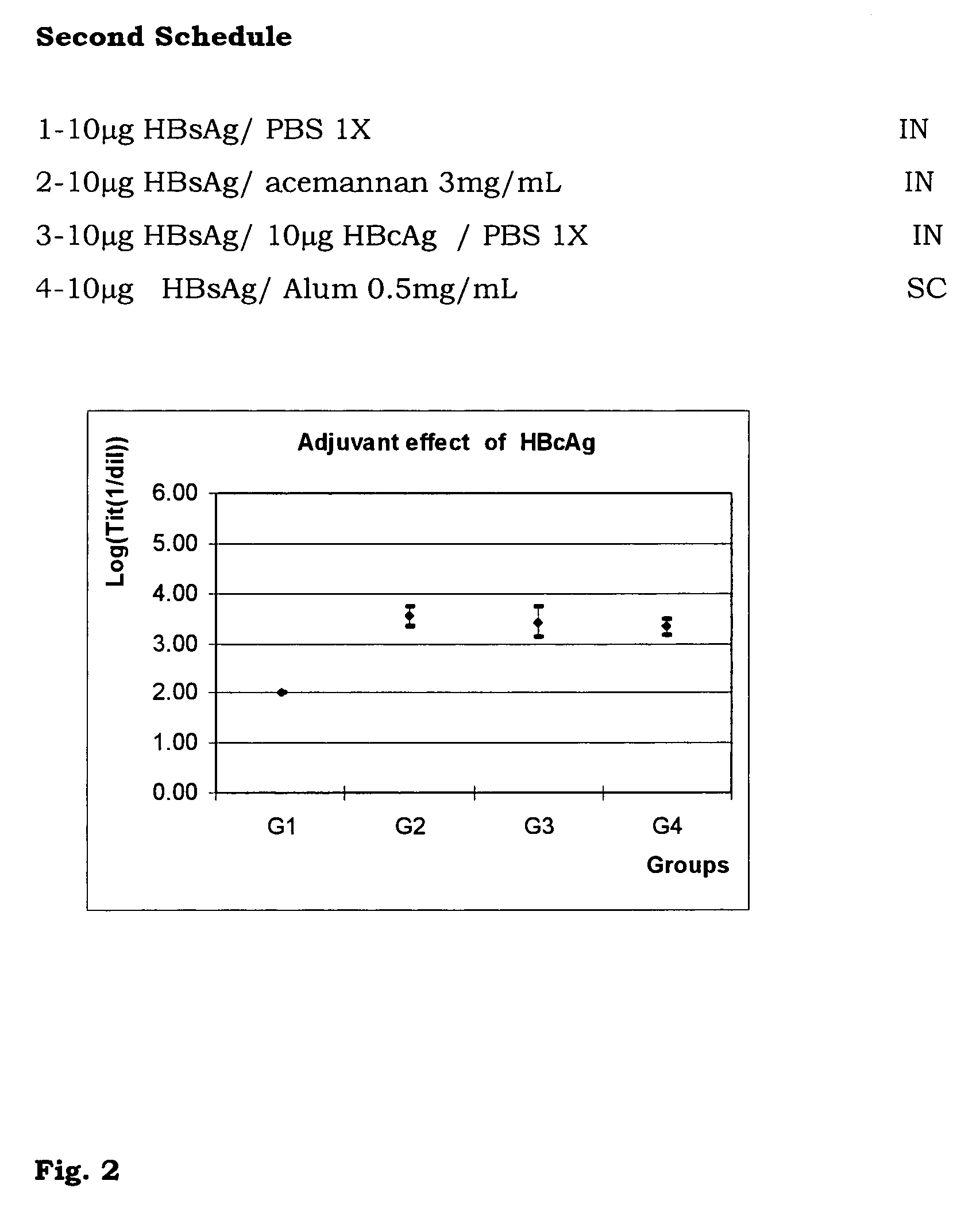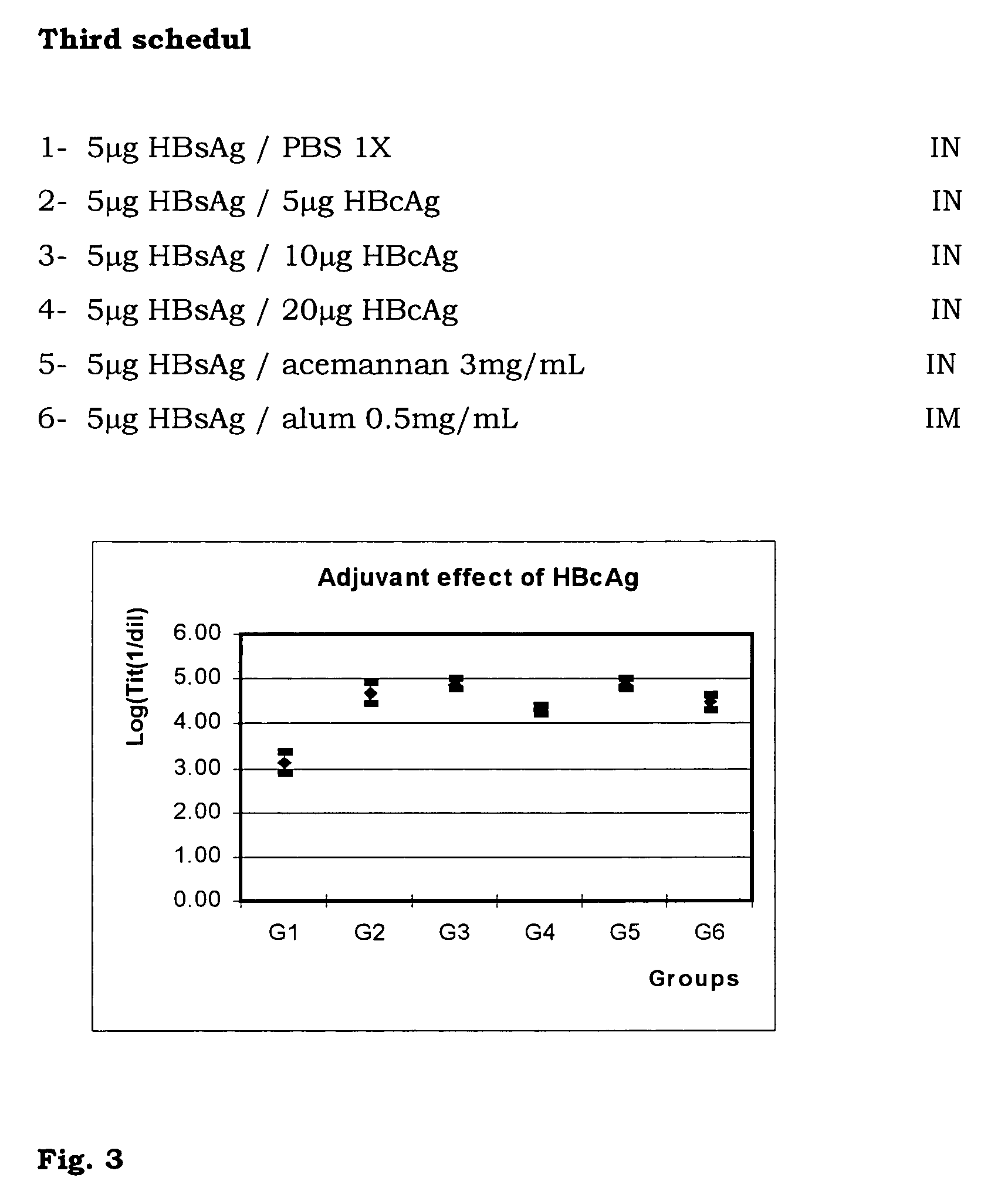Compositions containing virus-like particles as immunopotentiators administered through the mucosa
a technology of immunopotentiators and compositions, which is applied in the direction of viral antigen ingredients, dsdna viruses, biochemistry apparatuses and processes, etc., can solve the problems of incomplete protection, antibodies are not protective, and children are not protected from infection
- Summary
- Abstract
- Description
- Claims
- Application Information
AI Technical Summary
Benefits of technology
Problems solved by technology
Method used
Image
Examples
example 1
[0035]With the aim of evaluating the immunogenicity of HBcAg through the nasal route, 3 groups of 8 female BALB / c mice were inoculated with a dose of 10 μg of HBcAg in all cases. The first group was inoculated with HBcAg in acemannan (CIGB, La Habana) 3 mg / mL (dry weight), adjuvant previously used to increase the immunogenicity of particulated systems through the nasal route. The second group was inoculated with HBcAg in phosphate-saline (PBS) buffer. Group 3 was injected subcutaneously with the antigen in alum and used as a control group for systemic inoculation. The schedule was followed of inoculations on days 0, 14, 28 and the extraction was done on day 42. The antibody response was quantified by immunoenzymatic assay (ELISA) to determine the IgG antibodies against HBcAg in sera. The Student's t test was performed to analyse statistically the results, p<0.05 was considered a significant difference.
[0036]It was demonstrated that, with the use of acemannan it was impossible to inc...
example 2
[0037]With the aim of demonstrating the immunoenhancing activity of HBcAg on HBsAg when both are mixed and inoculated through the nasal route, 4 groups of 8 female BALB / c mice were assayed. A two inoculations schedule was carried out. The inoculations were on days 0 and 14. The extraction was on day 21. The group 1 was inoculated with 10 μg of HBsAg in PBS, group 2 with 10 μg of HBsAg in acemannan (CIGB, La Habana) 3 mg / mL (dry weight), group 3 with 10 μg of HBsAg and 10 μg of HBcAg. Group 4 was used as a systemic control, inoculating subcutaneously 10 μg of HBsAg in alum (FIG. 2). The Student t test was performed to analyse statistically the results, p<0.05 was considered a significant difference.
[0038]From this experiment we concluded that it is possible to enhance the anti HBsAg immune response with the inoculation through the nasal route of HBsAg and HBcAg. The anti HBsAg response was significantly superior as compared to the group when the HBsAg was inoculated in PBS and simila...
example 3
[0039]With the aim of studying the enhancing effect of HBcAg at different doses in the murine model, 6 groups of 6 female BALB / c mice were selected. The schedule had three inoculations (days 0, 14 and 28) and two extractions (days 26 and 42). The assayed groups corresponded with: (1) HBsAg 5 μg in PBS; (2, 3 y 4) HBsAg 5 μg with 5, 10 y 20 μg of HBcAg respectively, (5) HBsAg 5 μg in acemannan 3 mg / mL (dry weight) and (6) HBsAg 5 μg in alum 0.5 mg / mL. All groups except 6 were inoculated nasally. Group 6 was inoculated intramuscularly.
[0040]The Student's t test was used to analyse statistically the results, p<0.05 was considered a significant difference.
[0041]In this experiment we concluded again that it is possible to enhance the anti-HBsAg response with the coinoculation of HBsAg and HBcAg. The serum IgG response for the three immunized groups with both antigens was significantly higher to that obtained by inoculation of HBsAg in PBS and similar to that attained by the group inocula...
PUM
| Property | Measurement | Unit |
|---|---|---|
| Mass | aaaaa | aaaaa |
| Mass | aaaaa | aaaaa |
| Immunogenicity | aaaaa | aaaaa |
Abstract
Description
Claims
Application Information
 Login to View More
Login to View More - R&D
- Intellectual Property
- Life Sciences
- Materials
- Tech Scout
- Unparalleled Data Quality
- Higher Quality Content
- 60% Fewer Hallucinations
Browse by: Latest US Patents, China's latest patents, Technical Efficacy Thesaurus, Application Domain, Technology Topic, Popular Technical Reports.
© 2025 PatSnap. All rights reserved.Legal|Privacy policy|Modern Slavery Act Transparency Statement|Sitemap|About US| Contact US: help@patsnap.com



